Jennifer Scoullar's Blog, page 7
February 26, 2016
A Foray Into Historical Fiction
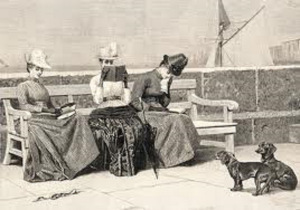 It’s time for some writerly chit-chat with author and writing mentor Sydney Smith. We’re both making a foray into historical fiction, a genre we haven’t written before. Here are some thoughts on the challenges we might face.
It’s time for some writerly chit-chat with author and writing mentor Sydney Smith. We’re both making a foray into historical fiction, a genre we haven’t written before. Here are some thoughts on the challenges we might face.
JENNY –
I love historical fiction. Take Hilary Mantel’s Wolf Hall and Bring Up The Bodies, for example. I learned so much about the Tudors from these richly detailed stories. I love the way novels bring a period to life, in a way most academic scholars do not. (I also enjoyed The Tudors television series, but mainly because I had a crush on Henry Cavill)
I asked some friends to name their favourite historical novelist. Surprisingly, two out of the three said Jane Austen. But she wrote about the people and society of her own contemporary world. That’s not historical fiction. To qualify in this category, according to the Historical Novel Society, novels must be set in a time at least fifty years before they are written.
 I see two main categories in this genre. There are the period pieces, frequently romances, such as the books of Georgette Heyer. These novels are set in a specific period, but are not impacted by specific historical events. I sometimes find these tedious, wishing they contained the odd true-life signpost to ground me in their times. Then there are what I call the genuine historicals, where both people and events from the past play a role. When well-written, these are the stories that fascinate me.
I see two main categories in this genre. There are the period pieces, frequently romances, such as the books of Georgette Heyer. These novels are set in a specific period, but are not impacted by specific historical events. I sometimes find these tedious, wishing they contained the odd true-life signpost to ground me in their times. Then there are what I call the genuine historicals, where both people and events from the past play a role. When well-written, these are the stories that fascinate me.
Now I’m writing my own historical novel, (make that novels, for I have a trilogy in mind.) Of course all history is fiction to some extent – it’s just written by the winners. I want to write a fresh version of Tasmanian history, giving a voice to the outsiders and to the animals teetering on the extinction precipice. I want to follow the lives and loves of two families from 1880, through two world wars, to the present day. Through the lens of this family saga, I want to explore why the tiny, far-flung outpost of Tasmania became a cradle for the first global environment movement. It’s a change from the contemporary rural fiction that I also write. What a lot I’ll have to learn!
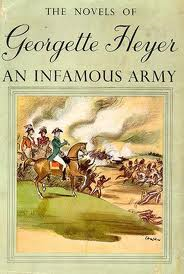 SYDNEY-
SYDNEY-
Now that you point out the two different forms of historical fiction, Jenny, I realise I prefer the other kind, what you call a period piece, and I call a costume drama. Actually, Georgette Heyer did write the sort you like. For example, An Infamous Army is about the Battle of Waterloo and is highly regarded in military circles as one of the best accounts of the battle ever written. The Spanish Bride concerns the Peninsula War, seen through the eyes of John Smith and his Spanish wife, Juana, and based on his memoirs. She wrote about William the Conqueror and John of Bedford as well. But, apart from The Conqueror, I didn’t care for those historical novels. I preferred the comedy of manners she came to specialise in, set in Regency England.
I’ve been turning over in my mind the historical fiction form. I have a novel I’d like to set in the Brooklyn and New York of the 1950s. Once I start, I’m sure I’ll think of other novels. This period interests me first of all because of the fashion. Dior introduced the New Look in 1947, feminine and frivolous after the austerity of the war years. It created a new trend in fashion that rolled on to the early 1960s.
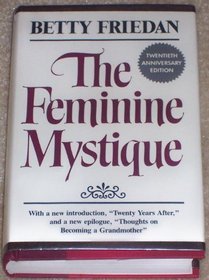 Also, women had been sent back into the home after the end of World War II, when men returned from the battlefields. The United States went through a period of growth in a materialistic sense, but also underwent torments of another kind. The 1950s is the era of McCarthyism. It’s also the era that gave rise to The Feminine Mystique, Betty Friedan’s groundbreaking book about the suburban malaise gripping women as their lives narrowed to cramped confinement, all domesticity with no outlet for their intellectual energies and wider aspirations. Hollywood depictions of women changed too. The dumb blonde was born in the 1950s. All of which is great for me and the kind of women’s fiction I write, about psychological confinement and the urge toward liberty.
Also, women had been sent back into the home after the end of World War II, when men returned from the battlefields. The United States went through a period of growth in a materialistic sense, but also underwent torments of another kind. The 1950s is the era of McCarthyism. It’s also the era that gave rise to The Feminine Mystique, Betty Friedan’s groundbreaking book about the suburban malaise gripping women as their lives narrowed to cramped confinement, all domesticity with no outlet for their intellectual energies and wider aspirations. Hollywood depictions of women changed too. The dumb blonde was born in the 1950s. All of which is great for me and the kind of women’s fiction I write, about psychological confinement and the urge toward liberty.
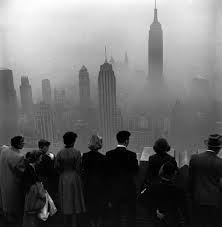
New York 1950’s
But for me, voice is a problem. Whenever I think about writing fiction set in the past, I come up against the issue of voice. First there’s the voice of the story. Then there’s the voice of the characters. How do they speak? I don’t feel the need to restrict myself to the speech rhythms and manners of the period. But I do need to capture the tang of it. I also want to capture something of the era, rather than transplant a 21st century story to the 1950s. But I don’t want to be confined by 1950s insularity or values. Maybe these problems will be solved once I connect with my main characters. But somehow, whenever I think of my own historical fiction, I feel close to my characters’ personal dramas and psychology, yet distant from them. They remain elusive in my mind.
And there’s something indefinable about the world of another country. It isn’t so much the past that bothers me as the mysterious otherness of a country I haven’t visited and don’t know except through books and movies. If I write anything set in 1950s New York, I first have to visit New York. I have to know what the weather is like, the feel of the sun on my skin, the hustle and bustle of people, the smell of public transport systems. Even if I never use this kind of detail, I feel I need to give myself the choice of using or not using it.
I suppose I need to create authenticity on my own terms. All fiction poses problems of authenticity. Historical fiction is no different.
JENNY –
I didn’t know that about Georgette Heyer, Sydney, having only read a few of her Regency romances. Perhaps I should revisit her work.
Creating an authentic, historical voice is obviously a challenge. I hate it when an author becomes bogged down in antiquated language. Yet I am trying to give a credible impression of late 19th century phrasing. Avoiding a heavy-handed result takes some care.
I know what you mean about experiencing a place before writing about it. I’ve made research trips to the locations of all my novels so far. With outback fiction, the land becomes a character, and is a major part of the genre’s appeal. It’s essential to get it right. No amount of research beats spending time on the ground. Reference books can’t buy you drinks at the bar and tell you stories. Photos can’t replicate the beauty of a red 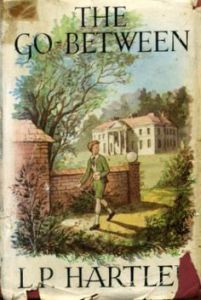 gum framed by pink sunrise. When you go to the heart of your setting, maps become landscapes. Statistics turn into people. Mountains and rivers become metaphors.
gum framed by pink sunrise. When you go to the heart of your setting, maps become landscapes. Statistics turn into people. Mountains and rivers become metaphors.
Yet as L P Hartley so famously put it in the first line of The Go-Between, ‘The past is a foreign country: they do things differently there.’ Nobody can go back in time. Reading widely, teamed with a vivid imagination, are the most important tools an author has. Part of my new novel will be set in South Africa during the Boer War. I wasn’t there, and I’ve never been to Africa, but that won’t stop me!

January 31, 2016
An Ancient Mimic
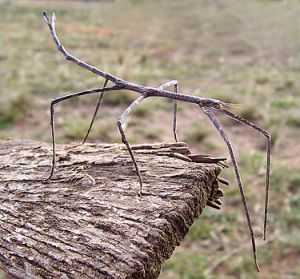 I’m deep in edits for my upcoming novel, Journey’s End, which will be out with Penguin Random House at the end of May. Taking regular walks is a must, to clear my head, and it’s always a treat for me to find an insect like this one during my wanderings – Ctenomorphodes chronus.
I’m deep in edits for my upcoming novel, Journey’s End, which will be out with Penguin Random House at the end of May. Taking regular walks is a must, to clear my head, and it’s always a treat for me to find an insect like this one during my wanderings – Ctenomorphodes chronus.
Phasmids (or stick insects) are remarkable animals. Even the name, Phasmid, has an evocative, romantic ring to it. They have been disguising themselves as walking leaves and twigs for 126 million years, even before the evolution of flowering plants. C. chronus has an uncanny resemblance to a gum tree twig and can grow up to 18 cm in length. The males are long and slender, have full wings and can fly. The females are larger but their small wings are not functional, except to flash at predators. Phasmids are harmless herbivores, eating gum and wattle leaves. They also eat blackberry leaves, and I sometimes find them doing a good job feeding on clumps of this invasive weed. They often rock back and forth, as if swaying in the breeze.
 Fossil discoveries from modern-day Mongolia mark some of the earliest examples of twig-mimicking insects. Evolution quickly produced disguises for bugs, with the arrival of the earliest birds and mammals, which visually preyed upon insects during the age of dinosaurs. This is more tantalizing evidence of early insect-plant co evolution. These ancient phasmids were about 7 cm long from tail to antenna tip. They had parallel black lines running along their wings, which at rest would have resembled a ginkgo tree leaf, also preserved as fossils in China and Mongolia where the insects lived.
Fossil discoveries from modern-day Mongolia mark some of the earliest examples of twig-mimicking insects. Evolution quickly produced disguises for bugs, with the arrival of the earliest birds and mammals, which visually preyed upon insects during the age of dinosaurs. This is more tantalizing evidence of early insect-plant co evolution. These ancient phasmids were about 7 cm long from tail to antenna tip. They had parallel black lines running along their wings, which at rest would have resembled a ginkgo tree leaf, also preserved as fossils in China and Mongolia where the insects lived.

Spiny Leaf Insect
One especially interesting Australian phasmid is the Spiny Leaf Insect. Females lay eggs resembling seeds, flicking them onto the ground below their tree. The eggs have a knob, called a capitulum, which is tasty to ants. Ants carry the eggs underground and eat only the knob, and leave the rest of the egg in the nest, protected from other animals that might eat it. The young phasmids (or nymphs) hatch after 1-3 years underground They look and behave like ants. When they emerge from the nest they climb into the trees, where they moult into slow-moving leaf mimics.
Phasmids are parthenogenic, which means the females can lay fertile eggs without mating, but the babies will all be girls. Males can even mate with species other than their own, which can create new species. What fascinating creatures! No wonder they’re becoming popular as pets. Museum Victoria is currently breeding rare giant stick insects, that can grow more than 50 cm in length. Next time I’m in Melbourne, I plan to meet these miracle babies!
Congratulations to Womblywoo for winning the prize draw book giveaway! I shall email you soon for your postal address.

January 23, 2016
2016 Australia Day Book Giveaway
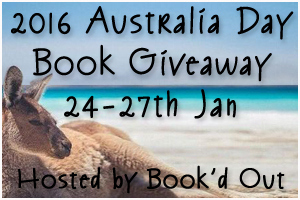 I’m delighted to be part of the Book’d Out Australia Day Book Giveaway Blog Hop celebrating Australian writers and stories. I’m giving away a copy of my latest novel Turtle Reef, and a copy of Jilted by the fabulous Rachael Johns. The giveaway is only open to Australian residents. Stop by the other blogs on the tour to win more great prizes.
I’m delighted to be part of the Book’d Out Australia Day Book Giveaway Blog Hop celebrating Australian writers and stories. I’m giving away a copy of my latest novel Turtle Reef, and a copy of Jilted by the fabulous Rachael Johns. The giveaway is only open to Australian residents. Stop by the other blogs on the tour to win more great prizes.
My Australia Day blog post is about a little Australian native orchid, that connects my memories of a lost brother with my upcoming novel, Journey’s End.
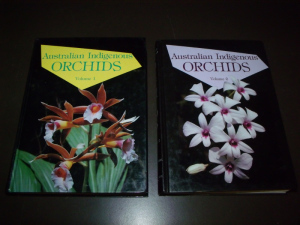 There is little more poignant in life, than helping to pack up the house of a loved one who has died too young. This has been my sad task recently, since the untimely death of my brother, Rod Scoullar. He was a learned man, a man who loved Australia’s fauna and flora – a naturalist of the first order. His study was a gold-mine of nature books, stored on impressive floor-to-ceiling shelves that covered an entire wall. It was here that I found the holy grail for Aussie orchid lovers – Australian Indigenous Orchids Vol 1 & 2 by A W Dockrill. These are hard to find volumes, and sell on-line
There is little more poignant in life, than helping to pack up the house of a loved one who has died too young. This has been my sad task recently, since the untimely death of my brother, Rod Scoullar. He was a learned man, a man who loved Australia’s fauna and flora – a naturalist of the first order. His study was a gold-mine of nature books, stored on impressive floor-to-ceiling shelves that covered an entire wall. It was here that I found the holy grail for Aussie orchid lovers – Australian Indigenous Orchids Vol 1 & 2 by A W Dockrill. These are hard to find volumes, and sell on-line 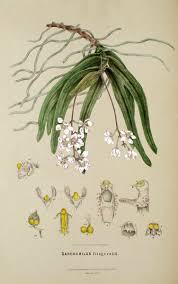 for up to $200 a set. But aside from being the definitive treatises on native orchids, they also provided me with a wonderful link to my new book, Journey’s End, which will be out in late May.
for up to $200 a set. But aside from being the definitive treatises on native orchids, they also provided me with a wonderful link to my new book, Journey’s End, which will be out in late May.
Journey’s End is concerned in part with a woman’s journey through grief. I’m deep in the edits at the moment. Little did I know when I was writing this book that it would take such a personal turn. It’s set in the wild, mountainous, subtropical rainforests of the Great Eastern Escarpment, and the rare Ravine Orchid (Sarchochilus fitzgeraldii) plays a significant role in the story. So I looked it up in my brother’s books, and found a glorious, full-colour plate of this beautiful and delicate flower.
 The Ravine Orchid is found in wet, humid rainforests of the Great Dividing Range, where waterfalls cascade from the tablelands. It is lithophytic, which means its roots cling to rocks or creep into humus-filled crevices. Old colonies form mats many meters wide, and relish the constant play of cool air through the deep, damp ravines. Plants also occasionally grow on the moss-covered buttresses of ancient trees. The fragile flowers appear in October and November, and are up to forty millimeters wide. Colours vary from pure white, white with a red heart, to a rare all-crimson form. They are born on graceful, pendulous stems which may measure more than a meter long. Quite a sight, when draped in full bloom on the rocks above a mountain stream.
The Ravine Orchid is found in wet, humid rainforests of the Great Dividing Range, where waterfalls cascade from the tablelands. It is lithophytic, which means its roots cling to rocks or creep into humus-filled crevices. Old colonies form mats many meters wide, and relish the constant play of cool air through the deep, damp ravines. Plants also occasionally grow on the moss-covered buttresses of ancient trees. The fragile flowers appear in October and November, and are up to forty millimeters wide. Colours vary from pure white, white with a red heart, to a rare all-crimson form. They are born on graceful, pendulous stems which may measure more than a meter long. Quite a sight, when draped in full bloom on the rocks above a mountain stream.
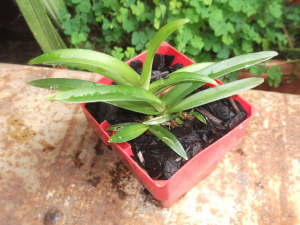 I was fortunate enough to buy a tiny specimen from the Tinonee Orchid Nursery when on a research trip for the book last year, pictured right. According to the wonderful Ray Clement, it should do well in the climate of the southern Victorian ranges where I live. So far so good. One day it may flower, and I’ll think of my brother, and his passion for Australia’s wonderful native plants.
I was fortunate enough to buy a tiny specimen from the Tinonee Orchid Nursery when on a research trip for the book last year, pictured right. According to the wonderful Ray Clement, it should do well in the climate of the southern Victorian ranges where I live. So far so good. One day it may flower, and I’ll think of my brother, and his passion for Australia’s wonderful native plants.
To go into the prize draw leave a comment on this blog post. Don’t forget to check out the other blogs at Book’d Out to go into the running for more great prizes!!

January 16, 2016
In Memoriam
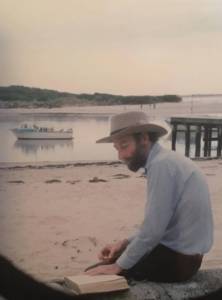 My big brother passed away without warning over Christmas. I’ve been paralysed, unable to write since. So my dear friend Sydney has written this wise, beautiful post for me. It’s about Rod. Thank you Sydney. Somehow by your gracious act, I’ve been set free to write again. I just needed a little help :) xx
My big brother passed away without warning over Christmas. I’ve been paralysed, unable to write since. So my dear friend Sydney has written this wise, beautiful post for me. It’s about Rod. Thank you Sydney. Somehow by your gracious act, I’ve been set free to write again. I just needed a little help :) xx
In Memoriam by Sydney Smith
Jenny’s brother Rod died in late December, suddenly and out of the blue, and since his going, I cling to a small yet persistent belief that he isn’t really dead. It’s involuntary. In my mind I “know” he’s gone. But that knowledge lives on the surface of my consciousness. In my heart, he lingers gently yet persistently.
I went to his funeral thinking that would put a full stop on this feeling that Rod isn’t really dead. A friend picked me up from the train station, and as we drove to the church, I told her how, three days after Rod’s death, my computer hid my Start menu, that every time I minimised a document or a browser, it vanished from view, and I didn’t know how to get any of it back. ‘Ghost in the machine,’ I said. Normally, I would call Rod for help and he would sort out my problem. He did that for lots of people. That’s how to get to know computers in a deep-down way, by fixing them when they get sick. I said to my friend, ‘Rod’s telling me I can’t live without him.’
The funeral went along as these thing usually do. Rod’s friends and family stood to speak about his life, his achievements, his effect on them. The minister invited people to come up to the lectern and add their piece about Rod. I wanted to say something but didn’t know what that should be. These people had told anecdotes of Rod that captured aspects of his mischievous, independent spirit, his charm and his talents. I wanted to say something else, but what, I didn’t know.
As I travelled home after the funeral, I was aware that it had not done what I hoped it would do. I still didn’t “know” Rod had died. As I write this blog, ten days after the funeral, I still don’t “know” it.
Death is a strange thing. No matter how often it happens, it remains a foreigner in our midst. It speaks a language we each have to learn. The spark that once animated a body is wrenched free, and what is left is familiar and at the same time shatteringly inadequate.
This “not knowing” Rod is dead is a kind of haunting. It’s an awareness of a space that used to be filled by a flesh and blood person, and which is now filled with the fact of absence and an ongoing, elusive presence. Rod is hovering in this room where I work at my computer. The air tingles with the voice that is about to speak. The air shifts with his movement. From the corner of my eye I almost see his beige and oatmeal plumage. This haunting isn’t oppressive. It simply is, gentle and lingering.
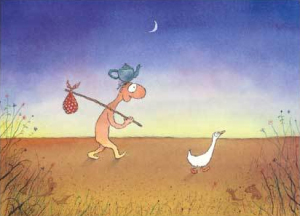 Death isn’t a single, decisive event. The body loses its life, and we are led to believe that this is the end. But it isn’t. There is no end, no finality. There is a gentle shifting into another kind of perception, where each of us in the intimacy of grief meet him again.
Death isn’t a single, decisive event. The body loses its life, and we are led to believe that this is the end. But it isn’t. There is no end, no finality. There is a gentle shifting into another kind of perception, where each of us in the intimacy of grief meet him again.

December 20, 2015
Emotion And Stories
 It’s that time of the month for general writerly chit-chat with author and writing teacher Sydney Smith. This month, we discuss the importance of emotion in narrative.
It’s that time of the month for general writerly chit-chat with author and writing teacher Sydney Smith. This month, we discuss the importance of emotion in narrative.
SYDNEY
As a writing mentor and manuscript assessor, I can often tell who has been to creative writing class. Apart from other telltale signs, these writers leave out emotion. They think they have to show it, not tell it.
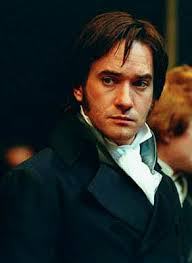 This is a tricky area. In some instances, an action will indeed reveal how a character feels. But the writer has to make sure that it does, and that it shows it strongly enough. For example, if a character is responding to an insult, they might redden and glare. But what if the character is having a reflective moment, thinking over some revelation that overturns their assumptions? In Pride and Prejudice, Jane Austen writes such a moment for Elizabeth Bennet, after Elizabeth reads Darcy’s letter explaining his relationship with Wickham and his actions concerning Jane and Bingley. Miss Austen knows an action won’t cover it. Not even a series of actions. The reader needs analysis of how Elizabrth feels, and how her feelings evolve from angry rejection of Darcy’s version to confused acceptance. That means emotions have to be named and thoughts described. If they aren’t named, the reader won’t know what she feels, and won’t be able to feel with her.
This is a tricky area. In some instances, an action will indeed reveal how a character feels. But the writer has to make sure that it does, and that it shows it strongly enough. For example, if a character is responding to an insult, they might redden and glare. But what if the character is having a reflective moment, thinking over some revelation that overturns their assumptions? In Pride and Prejudice, Jane Austen writes such a moment for Elizabeth Bennet, after Elizabeth reads Darcy’s letter explaining his relationship with Wickham and his actions concerning Jane and Bingley. Miss Austen knows an action won’t cover it. Not even a series of actions. The reader needs analysis of how Elizabrth feels, and how her feelings evolve from angry rejection of Darcy’s version to confused acceptance. That means emotions have to be named and thoughts described. If they aren’t named, the reader won’t know what she feels, and won’t be able to feel with her.
JENNY
Yes, I agree. Readers need to understand how the character feels, and many writers leave it out, in pursuit of showing, not telling. I used to fall into this trap.
 For example, maybe our character Peter is in an unhappy marriage, or hates his job. So the writer quite rightly puts Peter in difficult and provoking situations – perhaps he fights with his boss or his wife walks out on him. With something this crucial, it’s important to indicate Peter’s internal thoughts and emotions. There are a variety of ways for Peter to respond to his spouse leaving. He might be angry, resentful, relieved, scared, liberated, or a mix of these. It’s risky to let readers fill in the blanks until Peter’s character is well established. My editor once said you run another risk too. If the writer doesn’t emphasise Peter’s feelings, readers might think he doesn’t care – might think the event washed over him, leaving him cold. So it’s important to show reactions. Otherwise characters might be misunderstood. But don’t overdo it!
For example, maybe our character Peter is in an unhappy marriage, or hates his job. So the writer quite rightly puts Peter in difficult and provoking situations – perhaps he fights with his boss or his wife walks out on him. With something this crucial, it’s important to indicate Peter’s internal thoughts and emotions. There are a variety of ways for Peter to respond to his spouse leaving. He might be angry, resentful, relieved, scared, liberated, or a mix of these. It’s risky to let readers fill in the blanks until Peter’s character is well established. My editor once said you run another risk too. If the writer doesn’t emphasise Peter’s feelings, readers might think he doesn’t care – might think the event washed over him, leaving him cold. So it’s important to show reactions. Otherwise characters might be misunderstood. But don’t overdo it!
There are various ways to indicate how characters are feeling. Internal physical sensations are the classic ‘show’.
 ‘I lost the baby,’ said Anne. ‘A son.’
‘I lost the baby,’ said Anne. ‘A son.’
Henry couldn’t breathe. A cold stone settled in the pit of his stomach. This child had meant everything.
Then there’s body language – physical gestures, facial expressions, actions etc.
‘I lost the baby,’ said Anne. ‘A son.’
John’s fingers trembled. The glass lurched alarmingly, spilling wine down the front of his trousers. He cried out. This child had meant everything.
And sometimes it helps to flat out state the emotion, for clarity.
‘I lost the baby,’ said Anne. ‘A son.’
Henry raised his hand, as if he might ward off the terrible news. Disappointment fell like a physical weight upon his heart, crushing it. His marriage, his kingdom – his very honour as a man – depended on the arrival of an heir. This child had meant everything.
 As readers, we are on a search for feeling – for a quickened pulse and a brighter pallet of colours than we find in everyday life. To feel, we need an emotional connection with the characters. I believe it’s the place where all good stories start.
As readers, we are on a search for feeling – for a quickened pulse and a brighter pallet of colours than we find in everyday life. To feel, we need an emotional connection with the characters. I believe it’s the place where all good stories start.
SYDNEY
Aren’t you clever! There I was thinking Anne and Henry were two everyday Australian people – and they were THAT Anne and Henry!
Yes, reading is meant to be an emotional experience. It gives us access to other ways of living life. We’re meant to identify with the characters, especially the principal POV – although we’re free to identify with any character we choose to. I often think about the smaller characters in a novel, like Mary Bennet in Pride and Prejudice, and her foolish insistence on threadbare wisdom. Poor Mary is the daughter who came after Elizabeth, their father’s favourite. Mary is also the one who signals Mr Bennet’s disillusionment with his marriage. He loves the daughters he had when he still loved his wife, and keeps his distance from the daughters of his disillusionment. Of the younger three, Mary is the one who feels it most strongly, and competes with Elizabeth in the only way she can – through her efforts to be “wise” or intelligent. Poor Mary, I’ve always had a place in my heart for her.
 Anyway, describing your character’s emotions closes the gap between reader and character. Without that emotional content, the reader is forced to stand at a distance from the story, is forced to think the story, not feel the story. Thinking it is a lesser experience and lets the reader off the hook before they’ve got anywhere near it. Emotional investment is a vital ingredient in that much-desired quality we call unputdownable.
Anyway, describing your character’s emotions closes the gap between reader and character. Without that emotional content, the reader is forced to stand at a distance from the story, is forced to think the story, not feel the story. Thinking it is a lesser experience and lets the reader off the hook before they’ve got anywhere near it. Emotional investment is a vital ingredient in that much-desired quality we call unputdownable.


December 7, 2015
Buy Nothing Week & A Half!
 November the 28th was Buy Nothing Day. It’s an international day of protest against consumerism, and I took the pledge. However it felt too easy for me. As a rural writer, I work from home, and live quite a way from the nearest shops. November 28th was a Saturday. Tuesday is my regular shopping day, when I drive into town. So I decided to buy nothing for a week instead, not even food.
November the 28th was Buy Nothing Day. It’s an international day of protest against consumerism, and I took the pledge. However it felt too easy for me. As a rural writer, I work from home, and live quite a way from the nearest shops. November 28th was a Saturday. Tuesday is my regular shopping day, when I drive into town. So I decided to buy nothing for a week instead, not even food.
When Tuesday came around, number 2 and 3 sons, who still live at home, expressed surprise when the weekly grocery shop didn’t appear.
‘But we’re out of peanut butter, and mandarins and Sultana Bran.’
‘Eat something else,’ I said.
 It turned into an excellent way to use up what was in the cupboards. Two frozen squishy bananas turned into banana bread. I cooked the potatoes and onions that were almost past their use by dates, mixing them with eggs, cheese, frozen vegies and old packets of soup to make delicious fritters. Ends of flour in two canisters, and the apples in the bottom of the fridge became apple crumble. Lemons from our groaning trees became home-made lemonade. We managed just fine, and saved money. Ten days and counting of buying nothing. I could go another week, I decided.
It turned into an excellent way to use up what was in the cupboards. Two frozen squishy bananas turned into banana bread. I cooked the potatoes and onions that were almost past their use by dates, mixing them with eggs, cheese, frozen vegies and old packets of soup to make delicious fritters. Ends of flour in two canisters, and the apples in the bottom of the fridge became apple crumble. Lemons from our groaning trees became home-made lemonade. We managed just fine, and saved money. Ten days and counting of buying nothing. I could go another week, I decided.

Star
Until last night. On-line shopping brought me undone. I’m just bringing my beautiful but high-spirited mare Star back into work. She had an unexpected three week paddock holiday, when she unceremoniously dumped me and I sprained my knee. Star has always had a sensitive mouth, and fusses with the bit. I’ve tried her in bit-less bridles, and she hates them even more. Since starting to ride her again, she’s been chewing non-stop, and I started researching bits that offer more tongue relief. I found one last night that sounded perfect, promising to alleviate pressure by over 85% – and it was on special! I hesitated for few minutes, debating with myself. I’d been so good! Then I bought it.
 My buy-nothing campaign lasted ten days, and was cut short by the ease of internet buying. She’ll probably hate the bit, and it will hang on the wall along with all the others, testament to my lack of self-control. And tomorrow’s Tuesday – shopping day. The boys will be happy that I’ve given up my campaign against corporate domination!
My buy-nothing campaign lasted ten days, and was cut short by the ease of internet buying. She’ll probably hate the bit, and it will hang on the wall along with all the others, testament to my lack of self-control. And tomorrow’s Tuesday – shopping day. The boys will be happy that I’ve given up my campaign against corporate domination!
But seriously, as we enter the holiday season, consider what it might mean to celebrate a holiday that isn’t driven by commercial forces. (Apart from books. You’re always allowed to buy books!) Maybe go local, independent, or make something. We shouldn’t blow the family budget on things we might not want or need. Lets take back our lives and try buying less for Christmas. It might be the most joyous holiday season ever :)
Here’s a video of Star (stud name Brokeford Heide) including slow motion shots. How very beautiful! I think she deserves an early Christmas present, don’t you?


November 21, 2015
The Multi-Talented Lyrebird
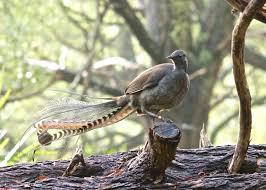 A lot of fencing has been happening at Pilyara lately. Thanks to a state government grant, we are fencing stock out of the timbered gullies that lead down to our creek. This is designed to protect wildlife and vegetation, as we live in a beautiful, mountainous area of high conservation value. All this hard work is already paying off – for the first time in years we’ve spotted a pair of Superb Lyrebirds in a fenced off gully, quite close to the house. What a thrill!
A lot of fencing has been happening at Pilyara lately. Thanks to a state government grant, we are fencing stock out of the timbered gullies that lead down to our creek. This is designed to protect wildlife and vegetation, as we live in a beautiful, mountainous area of high conservation value. All this hard work is already paying off – for the first time in years we’ve spotted a pair of Superb Lyrebirds in a fenced off gully, quite close to the house. What a thrill!
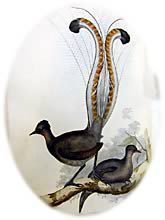
John Gould’s early 1800s painting of a superb lyrebird specimen at the British Museum
Lyrebirds are famous for their amazing ability to mimic any bird song. They also mimic human sounds such as mill whistles, cross-cut saws, chainsaws, car engines, alarms, gun shots, camera shutters, dogs barking, babies crying and mobile phones. The male is renowned for the beauty of his long, lyre-shaped tail feathers and hypnotising courtship display. However our resident pair of lyrebirds bring more than beauty and music to Pilyara. They provide a far more practical service – as fire wardens in what is predicted to be a summer of deadly heat.
Recent studies show that lyrebirds reduce the chance of bush-fires in areas where they forage. They rake the forest floor in their search for worms and insects, burying leaf litter, speeding up decomposition, and reducing the amount of fuel available for bush-fires. They also inhibit the growth of ferns, grasses and other plants which would otherwise burn. The Latrobe University research was conducted in burnt and un-burnt sites of Black Saturday‘s two most devastating blazes. It showed lyrebirds reduced forest litter by a massive 1.66 tonnes per hectare over a nine-month period.
‘Our modelling suggests the reduction in litter fuel loads brought about by lyrebird foraging has the potential to result in markedly subdued fire behaviour…The loss of lyrebirds from forests could result in higher fuel loads and an increased likelihood of wildfires threatening human life,” said the report, published in the CSIRO’s journal Wildlife Research. ‘They forage like chickens, they’ve got big feet with really long toes so they’ve basically got rakes for feet. They rake through the litter looking for worms and little bugs, stuff to eat. They’re digging through that humus and litter layer looking for little invertebrates and whatever they can find.’
‘Through that process they reduce the litter fuel load by, on average, 25 per cent, or about 1.6 tonnes per hectare. And we put those figures into a fire behaviour model and found that that level of fuel reduction is enough [that] in low fire-danger weather conditions it excludes fire, fire’s not possible under low to moderate conditions. But even in more extreme conditions the fire behaviour will be more moderate, [with] lower rates of spread, lower flame height, so a less intense fire.
Our conclusion is that lyrebirds are reducing the chance of fires occurring in the areas where they forage and the ecological significance of that is that un-burnt patches within large wildfires are really important sites for animals to survive post-fire.’
On Black Saturday in 2009, the wind change that saved us, devastated Marysville and took many lives. Summer is always a tense time here at Pilyara. It’s lovely to know that we have at least two new fire wardens watching over us. :) Play the video below for a taste of lyrebird song. (You have to skip the ad first) The great David Attenborough looks like he’s wandering around one of our gullies, and he misses the Whip Bird call.


November 15, 2015
Thoughts On Dialogue
 It’s that time of the month for general writerly chit-chat with author and writing teacher Sydney Smith.
It’s that time of the month for general writerly chit-chat with author and writing teacher Sydney Smith.
This month, we analyse a passage of dialogue from The Red King, by Victor Kelleher, to see what makes effective dialogue. Here is the passage itself:
‘Petie was sitting on a low wooden stool in the centre of the clearing, the mist and the smoke from the camp fire curling about him. There was no sign of the animals. His thin body was hunched over a flat piece of rock which he was using as a table; and his long fingers, heavy with rings, were busily drawing gold coins from a leather pouch which she had often seen hanging at her Master’s belt.
‘So!’ she hissed at him. ‘You’re nothing but a common thief!’
He swung towards her, gold coins spilling from his cupped hands, a mischievous smile forming on his lips. ‘Do I deserve no payment for saving you from the fever?’ he asked. ‘Not even a few paltry coins?’
‘It’s not just the coins!’ she shouted, and pointed to the collar encircling her neck. ‘This didn’t belong to you! It wasn’t yours to use like this!’
‘But it was also part of your master’s property,’ he countered. ‘The collar and the gold together. Why should I keep one and give up the other?’
‘I’ve already told you,’ she protested. ‘He made me free. Free! You had no right … no right …!’
‘No right?’ he interrupted. ‘Without me you would be dead. And there’s little freedom in the grave, Timkin, I assure you of that.’
‘I’d rather be in the grave than wearing this again!’ she replied hotly.
‘That too can be arranged,’ he answered, and all at once there was a sinister undertone to his words that matched the chill of the morning.’
SYDNEY:- One of the first things I noticed about this passage of dialogue is the power transfer. At the start, the power balance is fairly equal between the two characters, with a slight leaning toward Timkin, who has taken the moral high ground.
One of the first things I noticed about this passage of dialogue is the power transfer. At the start, the power balance is fairly equal between the two characters, with a slight leaning toward Timkin, who has taken the moral high ground.
‘So!’ she hissed at him. ‘You’re nothing but a common thief!’
By the end of the piece, Petie has taken power by adopting a menacing tone of voice.
‘That too can be arranged,’ he answered, and all at once there was a sinister undertone to his words that matched the chill of the morning.
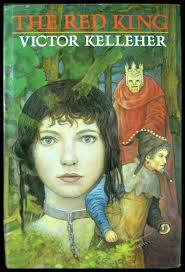 Kelleher underlines the menace in Petie’s tone by describing it. This has at least two functions. The first is to emphasise the power transfer. Emphasis is a vital part of good narrative. The second function is to draw a line under the dialogue sequence. The scene goes on but this bit of power transfer has been framed and divided from the next bit of the story by the description of Petie’s sinister tone of voice.
Kelleher underlines the menace in Petie’s tone by describing it. This has at least two functions. The first is to emphasise the power transfer. Emphasis is a vital part of good narrative. The second function is to draw a line under the dialogue sequence. The scene goes on but this bit of power transfer has been framed and divided from the next bit of the story by the description of Petie’s sinister tone of voice.
JENNY:-
This is an excellent passage to show how dialogue should convey an underlying tension. The conflict here is obvious – one character has the other captive. Timkin is moving in the direction of her desire – freedom. Petie is maintaining his desire – to hold her prisoner – and upping the ante by making veiled threats. Readers expect dialogue to have this kind of purpose and direction. They expect to be led somewhere and Kelleher does this.

Tom Chiarella
But is tension always necessary? Yes. Good dialogue is a combination of desire on the part of one character weighed against the tension inherent in the scene. You may think there isn’t always tension when people speak. A family conversation, for example, where people love each other. Does that sort of dialogue need tension? Of course! (For many of us, family causes more conflict than anything else.) It doesn’t have to be grand conflict. In his wonderful essay on writing dialogue Tom Chiarella puts it this way.
‘Tension is more like the energy between charged particles. It’s always there, even when two people agree. Think of two cars traveling a reasonable distance apart from one another along an interstate at sixty-five miles an hour. Safe distance.Same direction. Same speed. No tension, right? Wrong. We all know it only takes one little bump in the road, one touch of the brakes, a deer in the headlights for everything to be completely and suddenly redefined.’
SYDNEY:-
Yes, dialogue always has to have tension. I would only qualify what you said, Jenny, by saying that BOTH characters have desire. They are clashing desires. This is what causes the tension. In Kelleher’s excerpt, you can see that each character states their position clearly and so they fight it out through dialogue. Other pertinent information is shown through the narrative bits that frame the dialogue. What you get is a layered piece of storytelling through dialogue.
JENNY:-
Each line of dialogue simply responding to the previous one, bloated dialogue, is one of the most common mistakes of new writers. Speech in novels should be stylised. It should sidestep the obvious with off-centre responses, questions, silence or body language.
So ‘This is wonderful fruit cake. Sue.’
‘Thanks Jill.’
‘Can I have the recipe?’
‘Of course.’
Could become …
‘This is wonderful fruit cake, Sue.’
Her sister never handed out compliments. What was going on?
‘Can I have the recipe?’
Sue shoved her chair back from the table. ‘I need a drink.’
Much more interesting!
SYDNEY:-
Indeed! I switched off at the first passage between Sue and Jill, but at the second passage, I sat up straight and paid attention! Dialogue is meant to have that effect. Readers know they’re meant to sit up and pay attention when dialogue comes into it.
JENNY:-
I do have one problem with the Kelleher excerpt, and that’s his use of dialogue tags. I strongly believe that said becomes invisible and is all that’s needed. The occasional whispered or shouted is okay, but not protested, countered or replied hotly. It just distracts me.
I’m not a fan of loads of dialogue in fiction. No response is often the best response, so sometimes it’s good to simply shut your characters up. Silence can show confusion, pain, determination, anger – any number of emotions. It allows the rest of the scene to carry the weight via action, sensory description, physical details, thoughts or even the rhythm of words themselves.
SYDNEY:-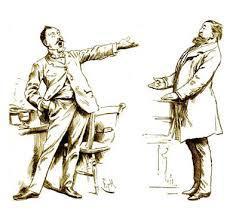 Yes, dialogue gains in texture if the writer uses other ways of conveying what’s going on with the characters, or if they’re inventive with their character responses. It takes practice and confidence to know when to use words and when an action will do the job just as well or better.
Yes, dialogue gains in texture if the writer uses other ways of conveying what’s going on with the characters, or if they’re inventive with their character responses. It takes practice and confidence to know when to use words and when an action will do the job just as well or better.
Also, dialogue does not replace action. As a manuscript assessor, I read many, many manuscripts by writers who thought dialogue was always showing, not telling. So they wrote reams of dialogue in which this kind of thing happened:
Joe said, ‘Look who is coming down the street. It is Leonard, carrying a bazooka. He is talking to a woman. A police car is following them.’
Sam said, ‘I am filling the kettle and putting it on the stove. Do you want coffee? I have a bad feeling about that bazooka. I was in Nam as a kid of eighteen and weapons make me think of those days. That is why I became a Federal police officer.’
The purpose of this sort of dialogue is to inform the reader. It isn’t about an exchange between two characters with clashing goals. But dialogue shouldn’t be merely an info dump. Dialogue has a dramatic function that must be fulfilled at all times.
When a reader starts reading a story, they enter into a contract. This contract involves trust – the reader gives the story their trust that it will do its job properly and carry them away on a wave of enchantment. If a story breaks that contract, it loses the reader, who stops reading or switches off or gets distracted. Dialogue that lacks dramatic tension breaks that contract.


November 8, 2015
Australian Tragic by Jack Marx
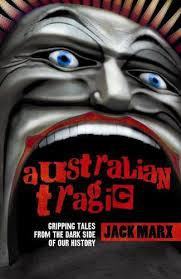 ‘Here are stories from Australia’s dark heart: Of catastrophe and misfortune, intrigue and passion, betrayal and tragedy. Some you may think you know – others, you have never heard of – but will capture your imagination.’
‘Here are stories from Australia’s dark heart: Of catastrophe and misfortune, intrigue and passion, betrayal and tragedy. Some you may think you know – others, you have never heard of – but will capture your imagination.’
This is a little gem of a book. Jack Marx, a Walkley Award winning journalist, has collected together true tales that reflect a fresh, un-sanitised version of Australian history. He says, ‘My original purpose … was to unearth stories that had not been widely distributed…and present them in the somewhat sensational style of the old penny dreadfuls …’

Jack Marx
The result is a wonderfully dark, gripping and uncompromising read. Marx writes with an incisive wit and a larrikin charm. These are strange, sad and shocking stories, though beautifully told. Fresh versions of our past.
‘Anyone who has ever snored through lessons at an Australian school knows that the official history of our nation is boring as milk,’ says Marx. ‘Where American kids get to thrill to tales from the War of Independence, the Civil War, the various bloody encounters of the Wild West and enough assassinations to keep conspiracy theorists busy for a century yet, our poor little bastards are forced to dream up ingenious ways to stay awake during lectures on the Gold Rush, Federation and the ‘adventures’ of Blaxland, Lawson and Wentworth.’
No such problems here! I defy anybody to snore through the tempestuous tale of Jim Hall, the Sydney-born boxer who knocked out more opponents than Les Darcy ever would, but who never made the record books. Or to remain unmoved by the tale of Moloch, ‘ … a fiery Prince of Hell who takes pleasure in the sorrow of mothers.’ Then there’s the heart-wrenching tale of Bob Bungey, a talented Battle of Britain fly-boy, who ‘learned to cope with dreadful things – alone in the air, watching death come to friends, and enemies too, who never were machines, never would be less than human beings in the minds of those who killed them.‘ The twist at the end of this story left me staggered.
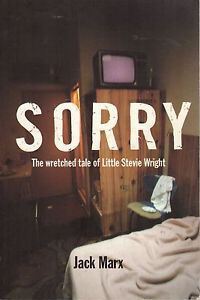 Marx also gives us cryptic and unfamiliar spins on well-known figures such as Merle Oberon, Steve Irwin, Martin Bryant and Michael Hutchence. He leaves us variously intrigued, angry, shocked and saddened. In my case, I was even a little ashamed of my fascination with these stories; stories that had slipped through the cracks of Australia’s official history. Thank you Jack Marx, for giving me a wealth of material for future fiction. Now I want to read another of your books – Sorry, The Wretched Tale Of Little Stevie Wright. ‘Mind-blowingly good,’ says one Goodreads reviewer. I look forward to finding out for myself.
Marx also gives us cryptic and unfamiliar spins on well-known figures such as Merle Oberon, Steve Irwin, Martin Bryant and Michael Hutchence. He leaves us variously intrigued, angry, shocked and saddened. In my case, I was even a little ashamed of my fascination with these stories; stories that had slipped through the cracks of Australia’s official history. Thank you Jack Marx, for giving me a wealth of material for future fiction. Now I want to read another of your books – Sorry, The Wretched Tale Of Little Stevie Wright. ‘Mind-blowingly good,’ says one Goodreads reviewer. I look forward to finding out for myself.

November 1, 2015
Celebrate Author’s Day!
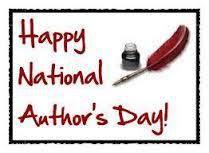
The first of November is Author’s Day. This is actually an American tradition, but hey, if we can have Halloween? – we can have this one too. Author’s Day began In 1928, when Nellie McPherson, president of the Illinois Women’s Club had an idea to set aside a day to celebrate authors. McPherson was a teacher and throughout her life, an avid reader. While she was recuperating in the hospital during World War I, she wrote a fan letter to fiction writer Irving Bacheller, telling him how much she enjoyed reading one of his stories. Upon receiving her letter, Bacheller sent her an autographed copy of another story. McPherson decided to show her appreciation by submitting a proposal for a National Author’s Day. A resolution was passed in 1949 declaring November 1 as a day to honor writers.
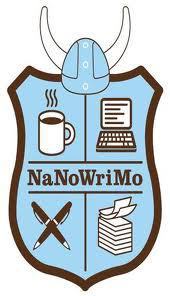 Australians also need a day (or better yet, a week) set aside to celebrate our favourite books and authors. And if it coincides with the first week of
NaNoWriMo
(Australia’s National Novel Writing Month), so much the better. Here are some suggestions on how to celebrate authors in style.
Australians also need a day (or better yet, a week) set aside to celebrate our favourite books and authors. And if it coincides with the first week of
NaNoWriMo
(Australia’s National Novel Writing Month), so much the better. Here are some suggestions on how to celebrate authors in style.1. Buy a book! What better way to support an author you love, then by buying one of their books and supporting them as writers. Buy a book written by your favorite author that you haven’t read yet or buy a book you know you love and give it as a gift.
2. Say thank you! Contact your favorite author to let them know how much you like their book. Like everyone else, authors like to know their work has meaning and that people enjoy their books.
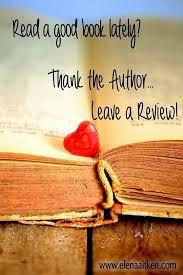 3. Do a book review! Make a blog post or youtube video reviewing your favorite book. Create some hubbub around your favorite author and get their name out there for other people who might not have heard of them yet.
3. Do a book review! Make a blog post or youtube video reviewing your favorite book. Create some hubbub around your favorite author and get their name out there for other people who might not have heard of them yet.4. Join NaNoWriMo and write a book! Become an author yourself. Start the National Novel Writing Month challenge. They have a motivational website to help inspire you to write that novel you’ve been putting off. See details at NaNoWriMo.
To me, Authors Day also means a time to thank YOU for being the best readers in the world! You’re the ones who make our work possible — so thank you!





